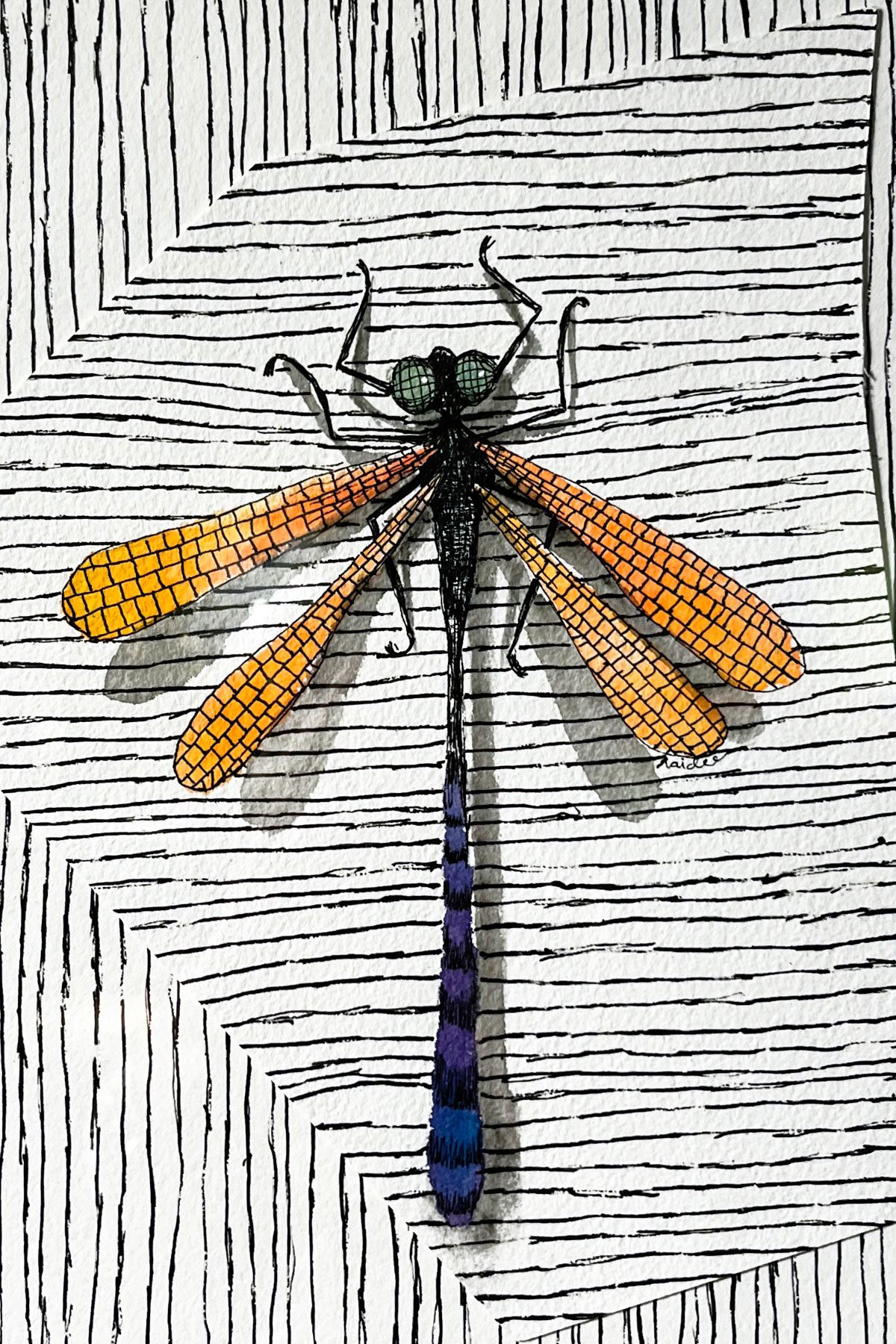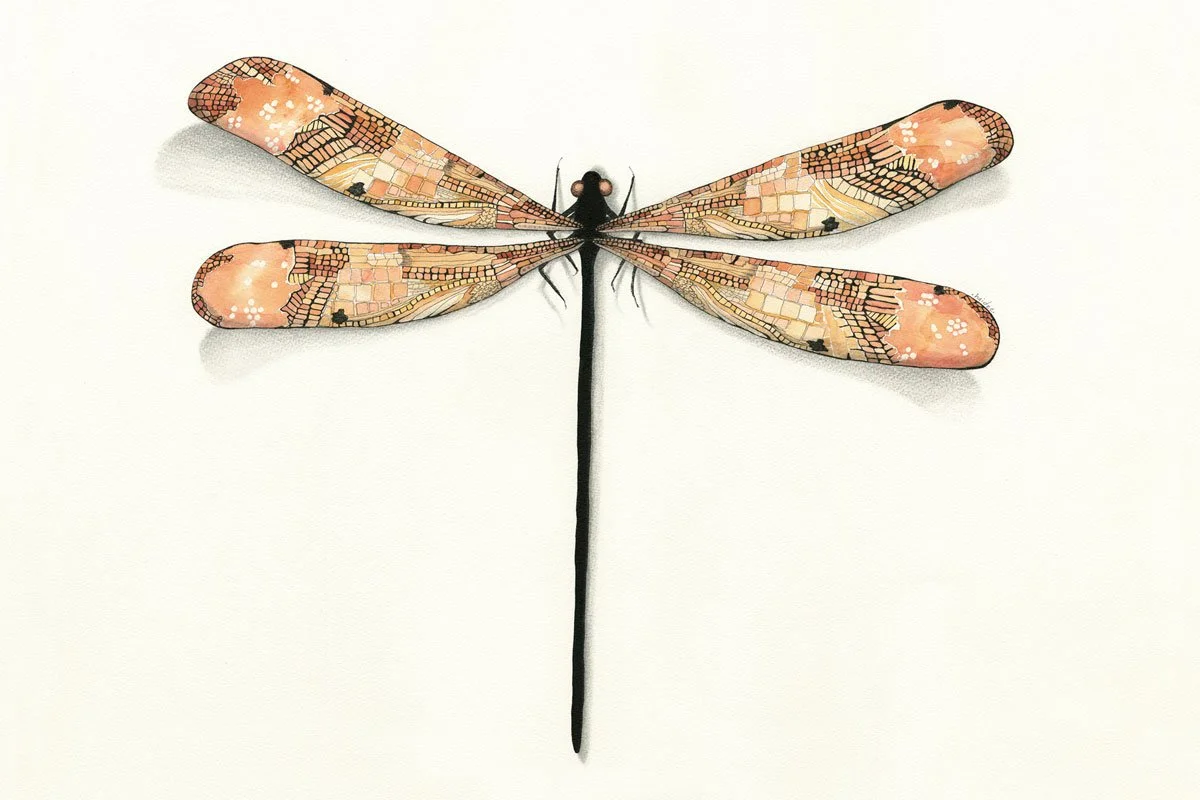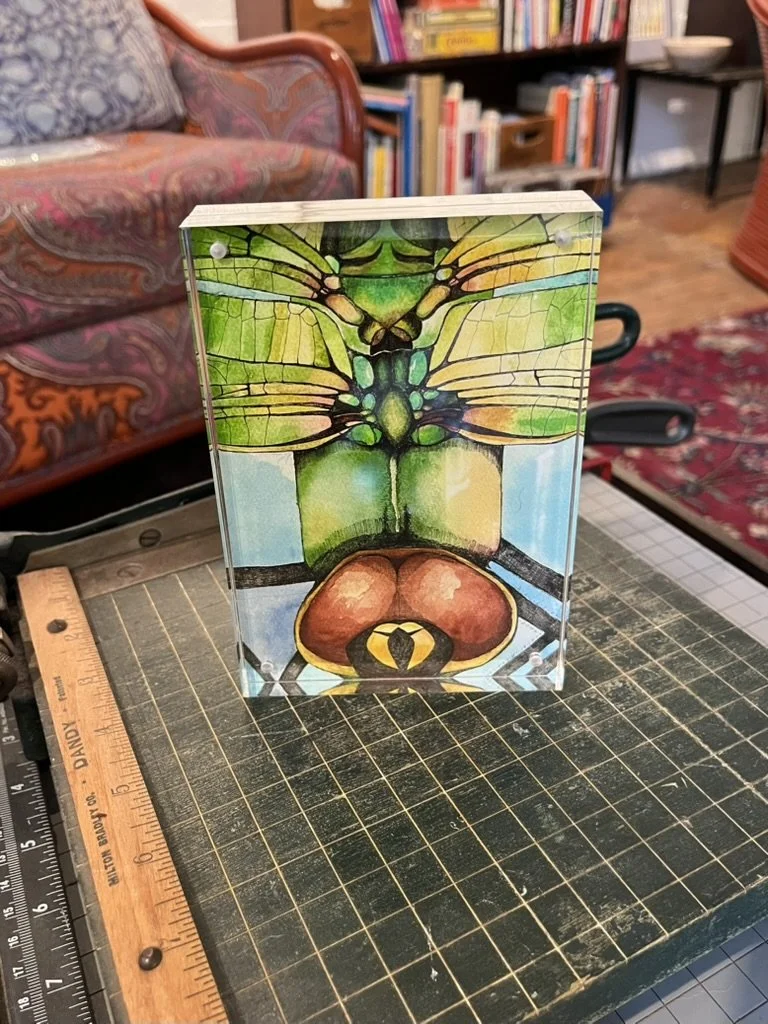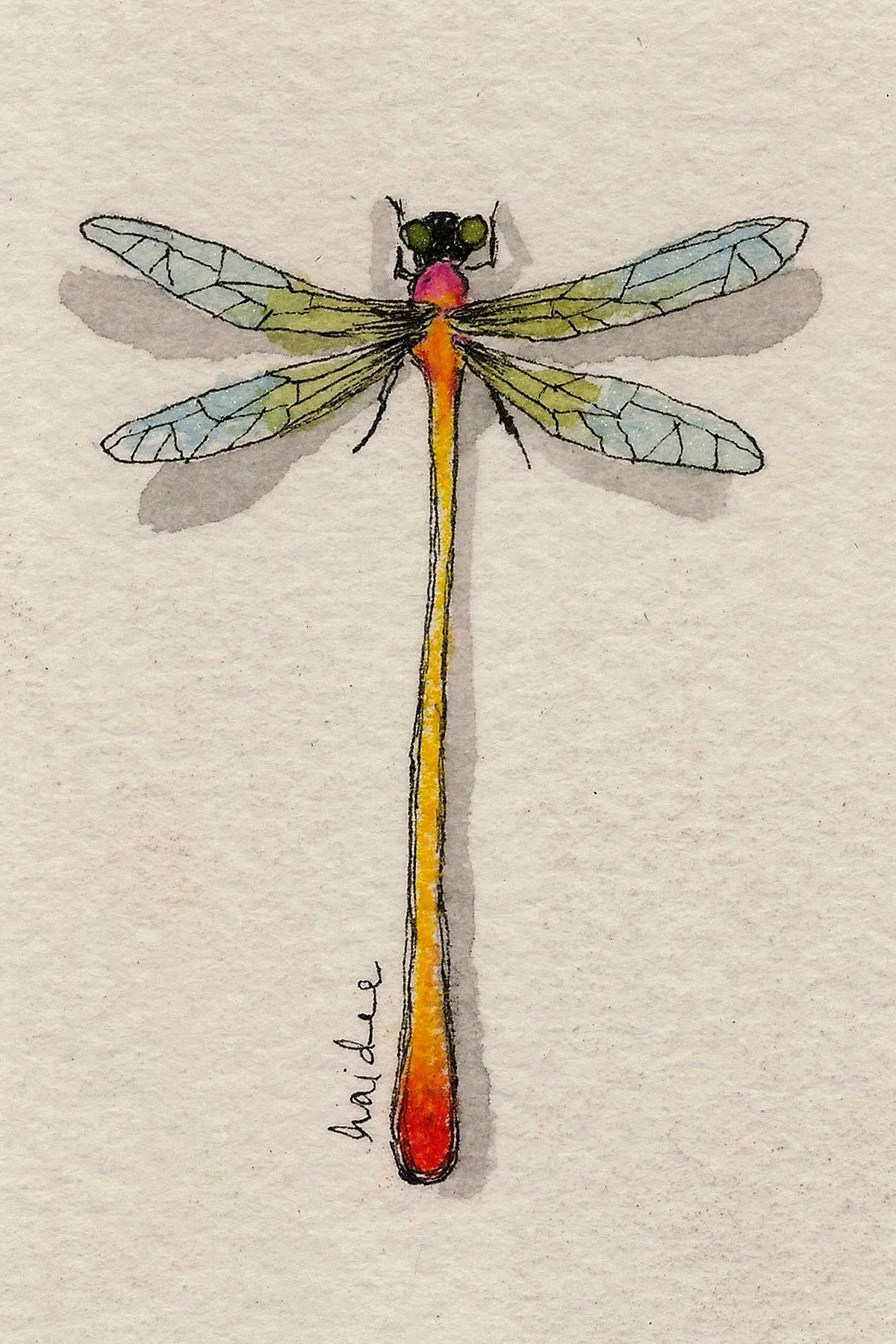In the summer of 1987, while nursing an absinthe hangover and a distrust of academic entomology, Marsden Reeve stumbled upon what he would later call “a warholian insect event.” The creature in question—a dragonfly with electric orange wings and a tail dipped in club-night indigo—was clinging lazily to a weathered dune plank on Provincetown’s eastern flats. Reeve, a failed lepidopterist and semi-retired scenographer, had been living out of a converted bait shack near Herring Cove, sketching insects on thrift-store linen and making silkscreens of sand fleas “just to feel something.” That morning, he saw something shimmer across the waterline, hovering with deliberate flair, and assumed it was a hallucination or performance art. It was neither.
Chromalara nova-provincialis is instantly recognizable by its oversized latticework wings, which appear dyed in layers of mango, poppy, and heat-lamp tangerine. The wings emit a subtle fluorescence at twilight—reportedly more vibrant after exposure to disco lighting or vintage sodium lamps. Its eyes are mint-grid and iridescent, while the abdomen shifts from plum to ultramarine in painterly bands. Reeve described it in his notes as “the Studio 54 of insects—flamboyant, a little unhinged, and clearly not local.” His sketches—done in sharpie and wine—became accidental icons of Cape Cod’s underground art scene, printed on gallery flyers and repurposed into tattoo flash for a summer crowd high on clove cigarettes and end-of-Reagan ennui.
Though traditional entomologists dismissed Reeve’s discovery as “pop nonsense,” the Firefruit Prophet gained cult status. The only known specimen was laminated into a cocktail menu at The Bitter Oyster (a Provincetown bar which no longer exists, but lives on in rumor and regret). No one has found another, though a few claim sightings during the week of Carnival, always near dusk, always just above the heads of those who aren’t looking. Whether C. nova-provincialis is real or a beautifully enduring prank, it remains a symbol of that glowy, unapologetic, off-kilter summer—the one everyone insists they were part of, whether they were or not.
Note: High quality archival glicée print on acid-free paper, a method that creates fine art reproductions with exceptional color accuracy and longevity. Pigments-based inks are designed to resist fading and discoloration and capture the finest details and subtle color variations with great precision.
Housed in a 4×6” crystal-clear acrylic specimen block, its 1” depth allows freestanding display. Each piece is designed to exhibit on desk or shelf.
Fly Design uses a practice known as entonology — the study of fictitious insects — to reimagine the natural world through scientific storytelling and poetic design.










